Content
Content
5. Strengthening partnerships with and opportunities for Māori
Te whakapakari i ngā pātuitanga me ngā āheinga mō ngāi Māori
We recognise and respect Te Tiriti o Waitangi. Building strong, meaningful and enduring relationships with Māori is one of the foundations to ensure our infrastructure works for everyone.
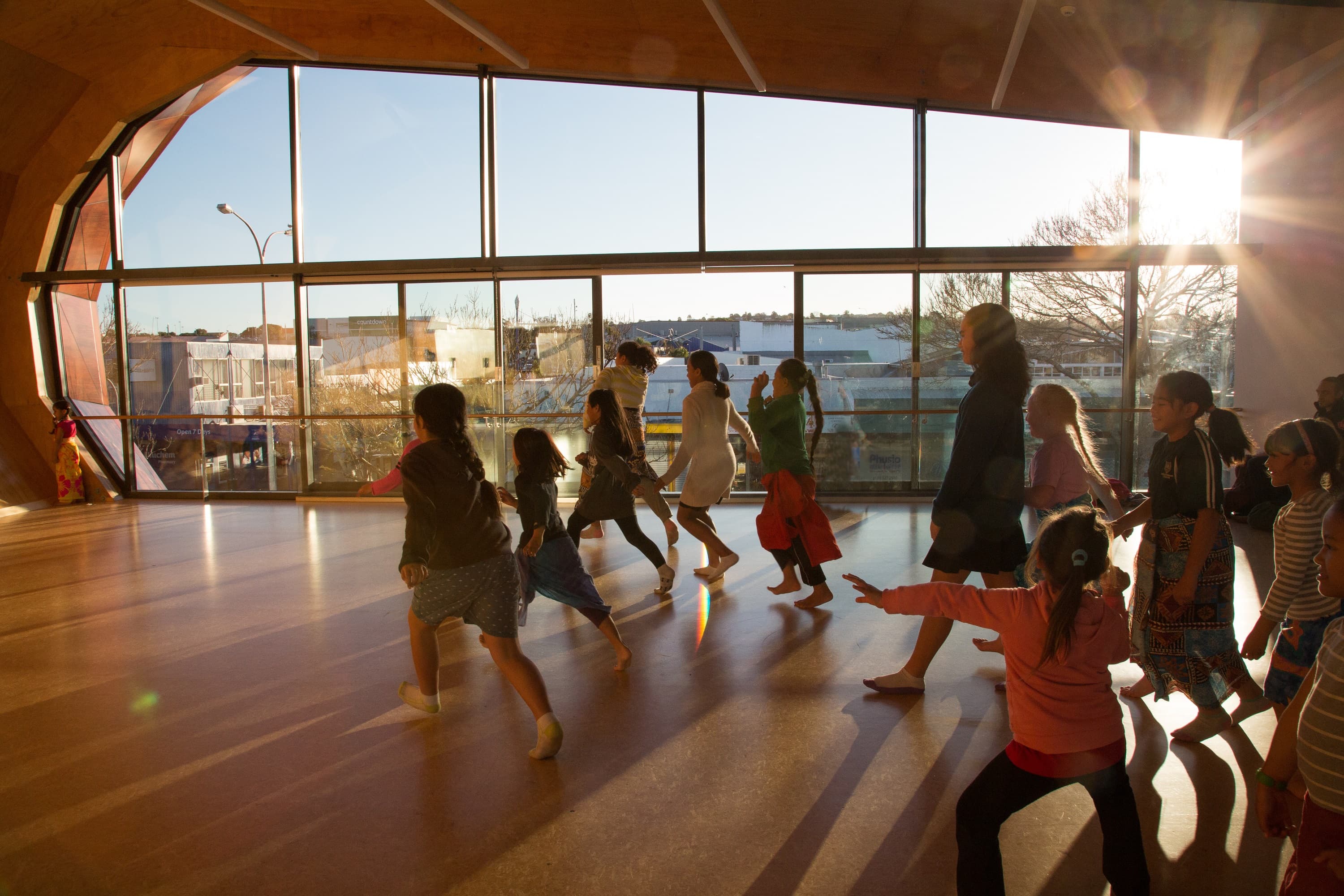
Children playing in Te Oro, the Glenn Innes Community Centre. The name ‘Te Oro’ has been gifted to the centre by Ngāti Pāoa with the endorsement of Ngāi Tai ki Tāmaki and Ngāti Whātua Ōrākei.
The way Māori interact with infrastructure is growing and evolving.
Māori are users of infrastructure, relying on the services it provides to access work, recreation and education, as well as to run their businesses and provide opportunities for entrepreneurship. Māori are also investors, developers, partners, governors and owners (see Figure 7). For example, Te Ōhanga Māori (the Māori economy), is growing. It accounted for $17 billion in production GDP (6.5%) in 2018.26 Māori are also involved in building infrastructure, with 12% of the Māori workforce employed in the construction sector.27
In these different roles, Māori bring a depth of knowledge, experience and values that can expand the knowledge base of all infrastructure providers. Building mutually empowering relationships with Māori will enrich the knowledge of the entire sector and unlock opportunities for Māori.
Figure 7: The many roles of Māori in our infrastructure system
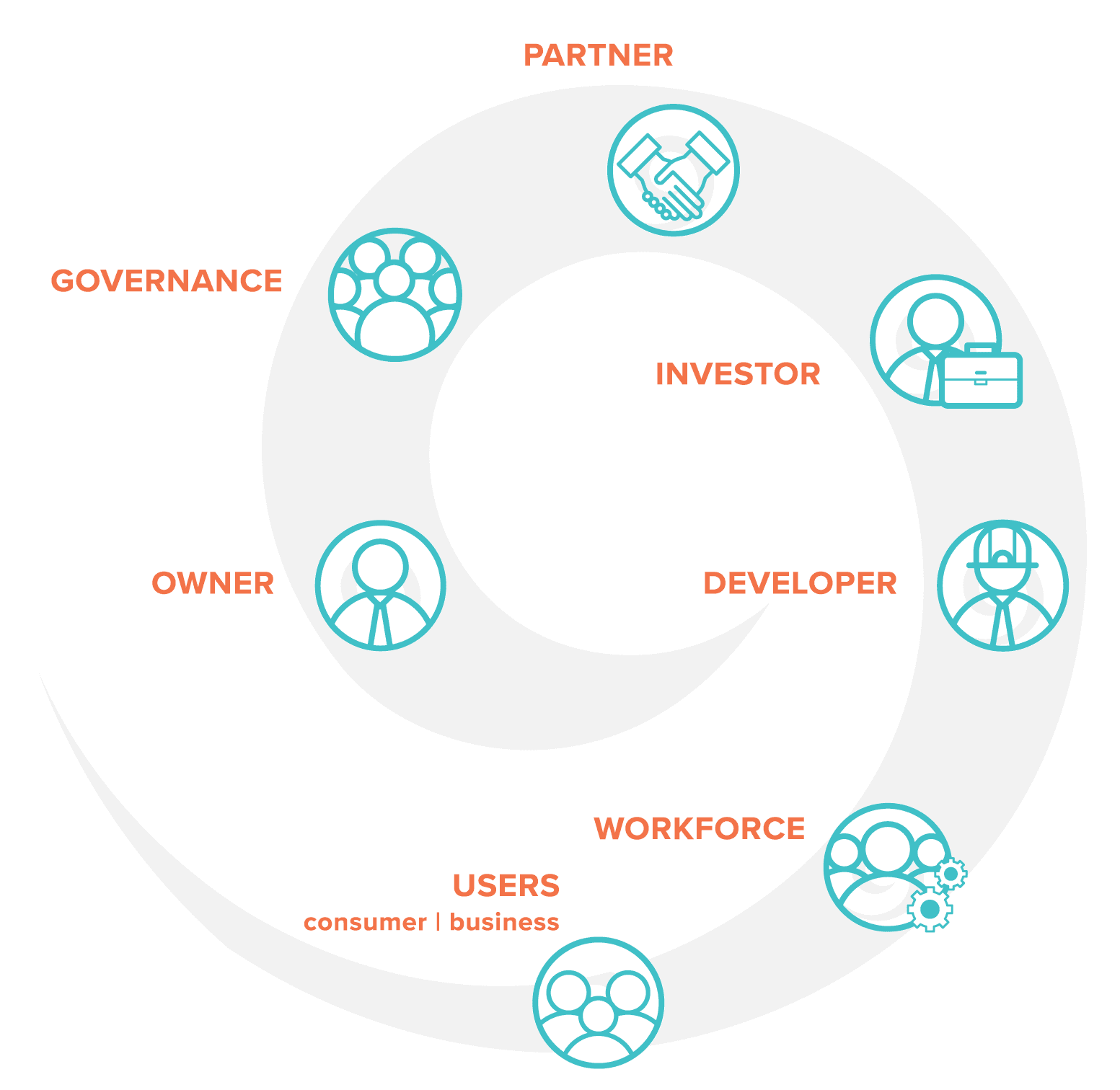
A strategic approach is needed to build mutually empowering relationships.
These mutually empowering relationships must be based on agreed values and principles. We’ve drawn on those established in Te Ara Kotahi (the Waka Kotahi Māori Strategy)28 as the basis for a proposed approach (see Table 2).
Table 2: Te Ara Kotahi (the Waka Kotahi Māori Strategy)
We recognise and respect the individual autonomy and authority of Māori. We respect each other as partners and therefore value each other’s aspirations, positions, roles and expertise.
We exercise care and the work we do should be mana enhancing and supportive.
We recognise that the environment is a taonga that must be managed carefully. We also recognise that Māori have a responsibility and obligation of care over their communities and environments.
We foster meaningful and enduring relationships based on good faith, mutual respect, understanding and trust.
We recognise, respect and uphold the principles of Te Tiriti o Waitangi.
Te Reo Māori is highly valued. We actively promote Te Reo Māori within the work we do.
Three areas for action: partnerships, unlocking opportunities and incorporating mātauranga Māori.
Drawing on the Waka Kotahi framework, we’ve prioritised three areas for action:
- Creating stronger partnerships with Māori across infrastructure planning and delivery.
- Unlocking opportunities for Māori across the infrastructure system.
- Incorporating mātauranga Māori into infrastructure design, planning and delivery. These weave into all aspects of this strategy (see Figure 8).
Figure 8: Weaving Māori objectives into the strategy
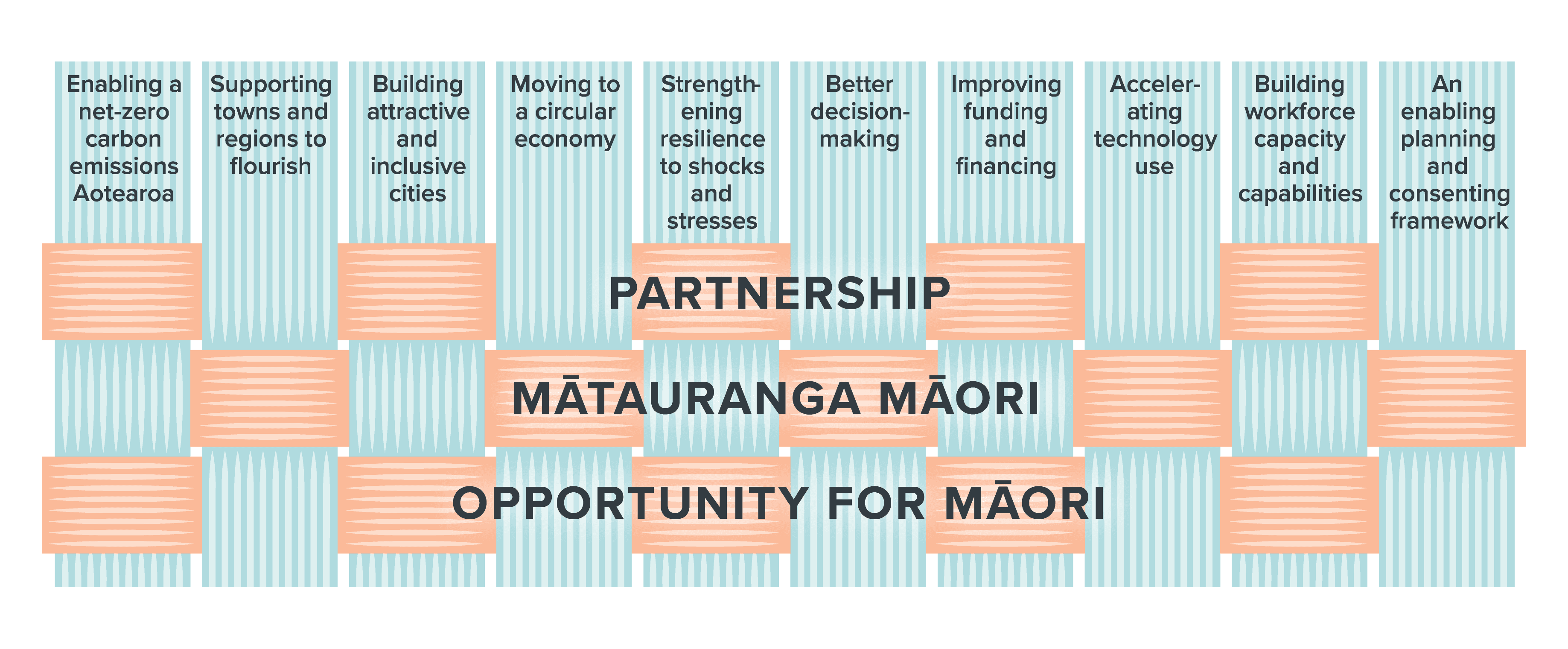
Strengthening partnerships with Māori.
Across infrastructure planning and design, a partnering approach ensures that Māori values and aspirations are reflected in infrastructure projects from the beginning. This might involve deciding on the location of a hospital, recognising and supporting the potential for iwi investment, or understanding the way changes to a water network might impact the mauri of local waterways. In these ways and many more, partnering with Māori can ensure that a project has the greatest benefit for the community it’s designed to serve, unlocking economic, environmental, social and cultural benefits.
Strengthening partnerships requires effective engagement that starts early, uses best practice and is proportional to the issue, nature and strength of Māori interests. It must also recognise and provide for cultural heritage, identity and mātauranga Māori. The development of a framework for building stronger partnerships during infrastructure planning and delivery is an important step in this process. The framework must be based on tikanga Māori, recognise that different partnership models will be appropriate for different types of infrastructure and must be consistent with an all-of-government approach. The development of this framework would be guided by a joint advisory group. This would need to be developed in a way that’s consistent with other government partnership approaches currently being considered under various policy reforms.
We must provide the time and resources for partnerships, as well as proactive, clear and timely dialogue on the direction of infrastructure investment. Many iwi suffer from intense demands on their time, which is often given voluntarily, as they’re invited to consult and partner in an increasingly complex environment. The government is currently leading major reform across water, health, and local government, as well as historic levels of infrastructure investment. This places a significant burden on iwi resources, time and personnel. At the same time, many government agencies and infrastructure providers vary in their understanding of engagement with Māori and their capabilities to do so. For these reasons it will be important to build the capacity and capabilities for a successful partnering approach throughout the infrastructure system, as well as within iwi. It needs to be built in a way that’s sustainable and enduring. This work has started with the development of the Māori Crown Relations Capability Framework.30
We must provide the time and resources for partnerships, as well as proactive, clear and timely dialogue on the direction of infrastructure investment. Many iwi suffer from intense demands on their time, which is often given voluntarily, as they’re invited to consult and partner in an increasingly complex environment. The government is currently leading major reform across water, health, and local government, as well as historic levels of infrastructure investment. This places a significant burden on iwi resources, time and personnel. At the same time, many government agencies and infrastructure providers vary in their understanding of engagement with Māori and their capabilities to do so. For these reasons it will be important to build the capacity and capabilities for a successful partnering approach throughout the infrastructure system, as well as within iwi. It needs to be built in a way that’s sustainable and enduring. This work has started with the development of the Māori Crown Relations Capability Framework.30
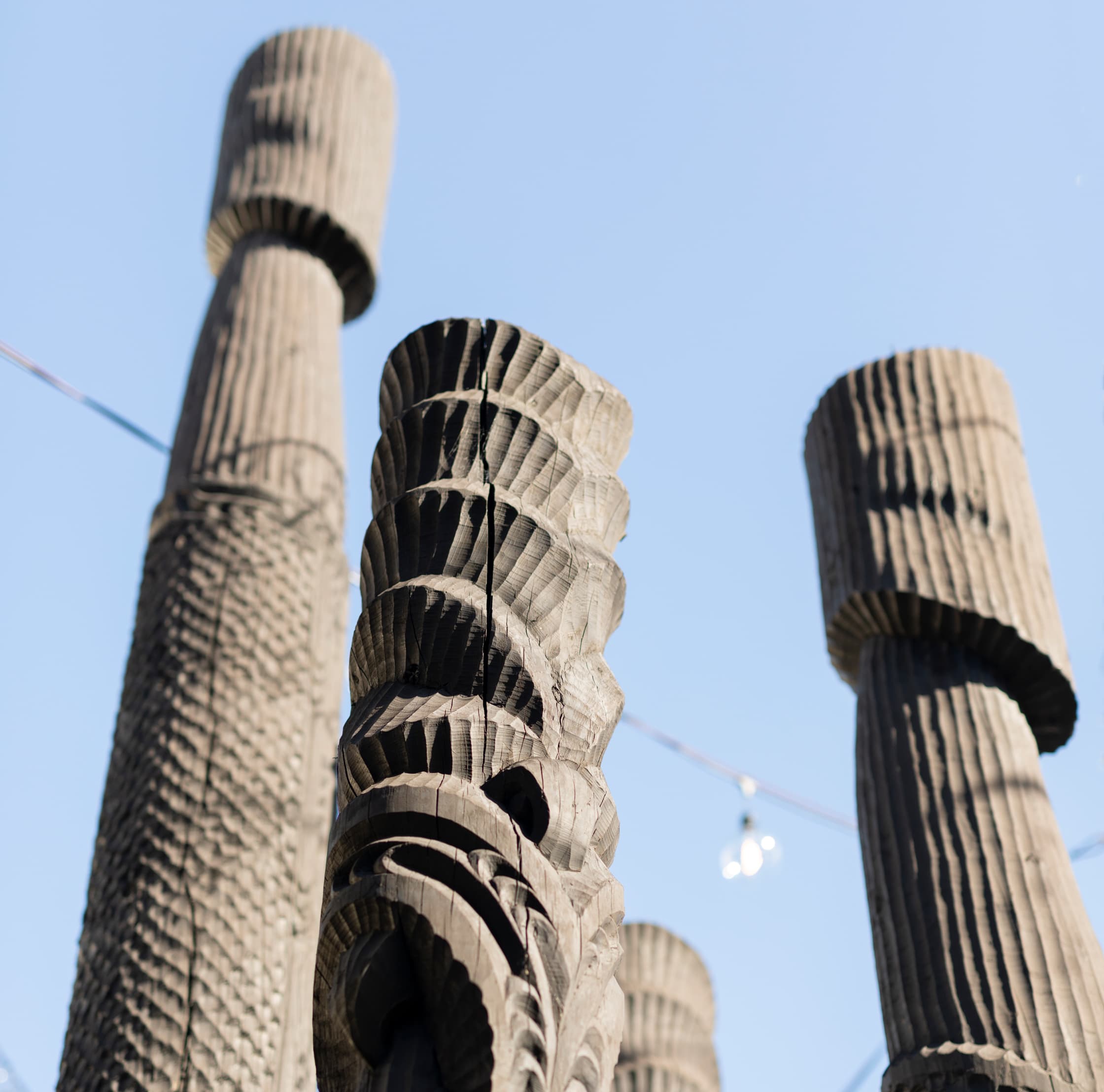
Pou Tū Te Rangi at Britomart, Auckland
Unlocking opportunities for Māori.
Infrastructure can have a major impact on wellbeing, whether it’s providing access to hospitals and schools, powering our workplaces or creating jobs in construction. However, we know that the outcomes for Māori in many of our infrastructure sectors are poor (see Figure 9) and that it’s important to identify opportunities where infrastructure can have a role in improving Māori wellbeing. These opportunities include:
- Caring for the environment and supporting Māori to exercise kaitiakitanga (environmental stewardship/guardianship).
- Promoting employment opportunities31,32 (see Section 7.5).
- Improving diversity across the infrastructure workforce (see Section 7.5).
- Enhancing social wellbeing through access to infrastructure services. For example, through telecommunication and internet services that improve connectivity in places where Māori live, transport infrastructure that brings employment opportunities closer and education that improves economic opportunity.
- Establishing an effective process for partnership within regional spatial plans (see Section 6.2).
- Identifying ways the infrastructure system can support an equitable transition for Māori, for example in the transition to clean energy required to deliver net-zero carbon emissions and informing a fair transition (see Section 6.1).
- Using procurement as a mechanism to unlock opportunities for Māori. For example, in 2020 the government announced that it would require mandated agencies to ensure that at least 5% of relevant contracts are awarded to Māori.
- Recognising and respecting Māori rangatiratanga while supporting iwi aspirations, plans and goals.
Figure 9: Māori outcomes can be improved across our key infrastructure sectors
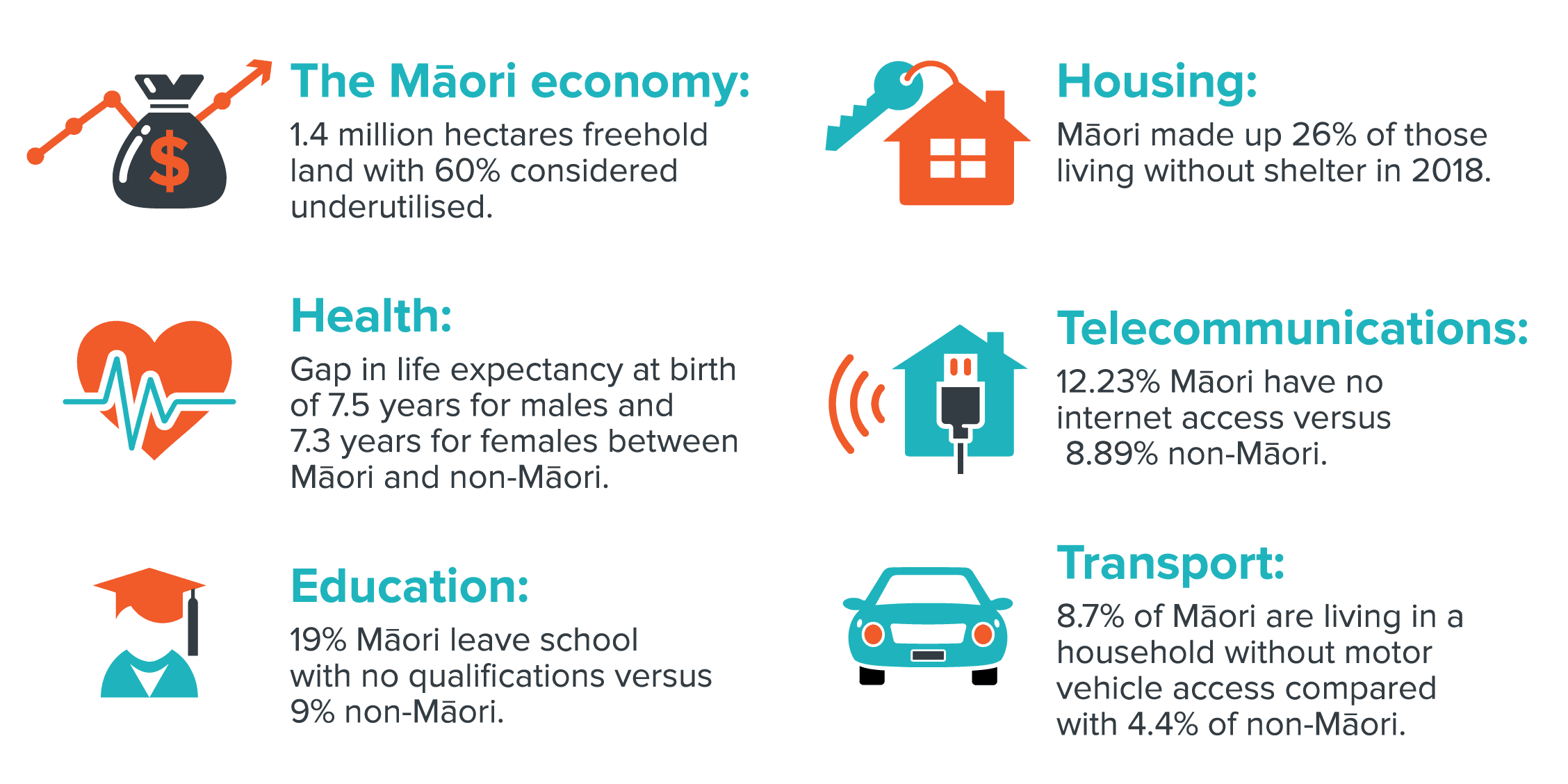
Source: Climate Change Commission (2021), Statistics New Zealand (2021), Digital Public Service (2020), Tokona Te Raki Māori Futures Collective (2019), Ministry of Health (2019)
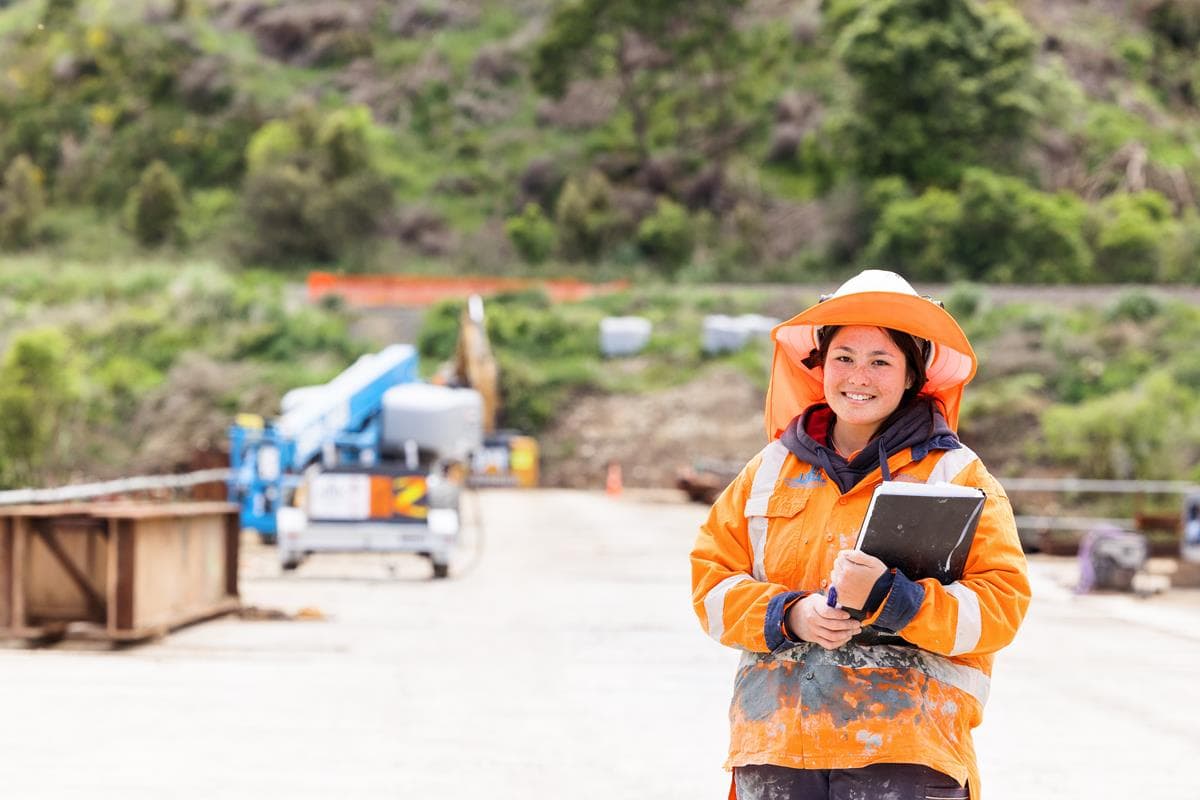
In an historic ‘first’, Waka Kotahi have partnered with local iwi to form Te Ahu a Turanga Alliance.
Incorporating mātauranga Māori into infrastructure design, planning and delivery.
Mātauranga Māori, the knowledge, skills and concepts developed by Māori over centuries of living in Aotearoa, has made important contributions to health, social policy and many other fields. However, the potential for mātauranga Māori to contribute to the development of infrastructure is only just being realised within the sector. We can work to grow information and advice about how mātauranga Māori informs infrastructure planning, policy and delivery, as well as decision-making on infrastructure priorities.
Strengthening the mātauranga knowledge base requires a research agenda. This can draw on best practice from previous projects (see Case Study 1). Building a strong evidence base of what works will support better strategy, planning and project delivery across the system.
Case study: Te Ahu a Turanga: Manawatū Tararua Highway
In an historic ‘first’, Waka Kotahi partnered with local iwi to form Te Ahu a Turanga Alliance. A major slip in April 2017 left State Highway 3 through Manawatū Gorge impassable. A new four-lane highway with shared use path is being built over the Ruahine Range, to provide a safe, resilient and efficient route between Woodville and Ashhurst. The project value is around $620 million.
Iwi partners include Rangitāne o Manawatū, Rangitāne o Tamaki nui-a-Rua, Ngāti Kahungunu ki Tāmaki nui-a-Rua, Ngāti Raukawa ki te Tonga and Ngāti Kauwhata. This special partnership sets the project apart and has been seen as an approach to be replicated on future infrastructure projects.
Soon after the slip in 2017, Waka Kotahi sought to involve iwi in the project. The offer of partnership was extended and relationships were built with collaboration and time. Today, iwi partners are represented throughout the project: on the Alliance Board, an iwi specific forum (Iwi Working Group), at senior management (through the appointment of a Kaiārahi, Kaikōkiri and Kaihāpai), at the operational level with Kaimahi working on the design of the project and how it is constructed, and Kaitiaki working within the construction team.
Relationships have been respected and nurtured, with senior management within Waka Kotahi taking responsibility for championing the project and maintaining consistent contact with iwi to enable trusting relationships to be built. As the project has proceeded, the mutual value of these partnerships for the natural environment, the people and the project has been recognised.
- As partners, iwi made submissions on the Notice of Requirement for the highway alongside Waka Kotahi and helped develop the consent application, including several key management plans.
- Each iwi was part of the selection process for the preferred construction consortium, interviewing the applicants and providing a recommendation to the selection panel.
- Once the construction alliance was selected, iwi joined the Project Alliance Board and Alliance Management Team.
- Iwi led the design and development of significant cultural design elements and have taken responsibility for cultural monitoring of all project works.
- The mauri of the Project has been strengthened through the application of project values founded in Mātauranga Māori, including initiatives based on the Te Whare Tapa Whā model of wellbeing and Whānau Ora.
While there’ll inevitably be areas for improvement, the project is achieving positive outcomes for iwi that include:
- Skills and capability development within iwi across the range of project disciplines, including governance, management and delivery.
- Significant cultural design elements across the project that will recognise and honour the relationship of mana whenua to the whenua and awa.
- The development and implementation of cultural baselines to monitor the health of the Manawatū awa.
- Business opportunities for iwi in both construction and environmental management.33